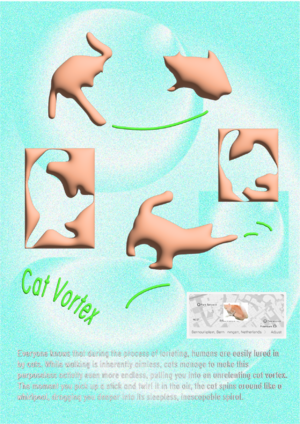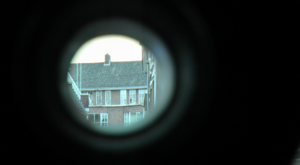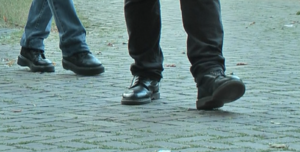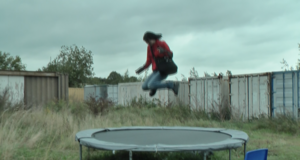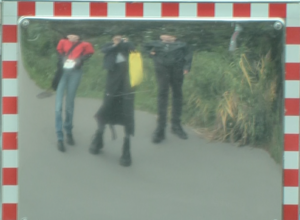SIGN SPREAD Zinefest 2024
This is a page collecting research and enthusiasm, documenting findings and questions, gathering and distributing little pieces of Groningen in preparation for and reflecting on the 2024 edition of SPREAD Zinefest.
First Trip Findings
At the start of September, we got to visit Groningen in preparation for the event. Marie-jeanne and Ron asked us to summerize our activities and findings briefly.
Thijs
I brought equipment to mimic my normal day-to-day activities, to see how I would experience Groningen / feel like and act as a resident / be able to compare it to my Rotterdam modus operandi. This included a city run and study sessions. I practised unguided loitering to understand the natural flow of the city. Where do I find myself again and again? Who do I meet? How do I feel? I then did some list making exercises to hone in on specific details . force a different perspective / get to appreciate mundanity. (These words were written sitting on the ground at the Grote Markt)
I am still digesting findings. Some first ones include:
- Groningen's color palette is subtle and soft. The city center's street (often with the pavement without kerb, the same level as the street) is not-in-your-face-yellowish. The city branding is a pink shade we've started to name 'please-ignore-me-pink'. A model of the city in the Forum even showed the landmarks with please-ignore-me-pink markers. It is used on scaffolding surrounding construction sites, too, presenting the new plans in avro-tros-font fashion.
- The city is a very particular kind of quiet, some mix between anticipation and acceptance, like it is somewhere between the future and the past, but not terribly concerned with the pressure of the moment, like Rotterdam might be. I got this feeling for example by the people sweeping the streets* in the morning, by all traffic lights being turned off, ... *(that are oftenflush with the pavement in the city center)
- The city dubs itself 'The City of Talent', but seems to have a particular vision for what talent is. For example, the RUG is promoted more than the Hanzeschool and more still than the 4 MBOs. These are often placed hierarchically, and often only the uni is mentioned. Similarly, some high level sporters are shown. In general, this gives me a sense of ambition that is very much tied to particular achievement.
- Walking the streets, I can listen to music just fine, but don't necessarily need to as a distraction or as escapism.
- The city is very providing for seating. There's many many benches in the center, scattered around squared and parks. This might accomodate for sleeping places for homeless people, though I haven't seen anyone use it like that. I wonder about the enforcement. The Forum in particular is a sitting-nook-extravaganza, with at least 31 distinct ones. These do accomodate for different modes of loitering and living, but still might be limited to the image of young urban professional.
I think these are pretty abstract observations, it can surprisingly difficult to make a concrete one. but I think this is also due to Groningen's nature. It doesn't present itself so outwardly and in your face. It appears lively while calm and cozy. This is inviting, but also a subtle way to present an agenda that values a particular brand of orderly living and of traditional ambition. My observations being intangible is, I think, indicative of my experiences being so 'pristine'.
Maria
Since this was the third time I visited Groningen and the intervals between visits have been quite long, one of the things I examined and researched most these days was myself: The emotions evoked by places that I either remembered or couldn't recognize, and their association with different phases of my life. I embraced this psychogeographical element as vital part of my research for this project.
Looking outside, cell phone in hand, I revisited the center and several adjacent neighborhoods in every direction, pondering on the contrasting aspects of the city and the ways they blend: the vibrant Friday-night life and the elaborate Saturday-morning bell tower melodies, the Red Light district, the cultural scene, the gas fields, the university, the suburban life beyond the center. I explored Eemshaven and its relationship to the city, its immense size and expanding tendencies, and back in the city I visited autonomous communities and liminal spaces facing gentrification.
Besides the big questions, I focused equally on the aesthetically surprising details, on the feast for the senses that every new environment is, and tried to capture the city and its surroundings through little mundane, unsung landmarks that will be celebrated and claim recognition in my subjective mapping.
zuzu
Loading screen
We stayed in the bustling city center, where the chimes from the clock tower would drift through the cracks of the window, changing tones every few minutes. The areas typically highlighted on tourist maps have a certain magic to them. It’s as if all the noise, excitement, and tourist groups are confined within the borders of these mapped zones. Crossing a certain street feels like passing through the loading screen between levels in a video game—once you’re on the other side, the hustle and bustle vanish in an instant, replaced by the calm of a more peaceful, residential neighbourhood.
Hidden natural
However, this tranquillity is interspersed with a natural kind of activity—butterflies, buzzing bees, and drooping, crowded plant fruits. On sunny days, these elements reveal a kind of cacophony underneath the stillness.
Cat vortex
Everyone knows that during the process of loitering, humans are easily lured in by cats. While walking is inherently aimless, cats manage to make this purposeless activity even more endless, pulling you into an unrelenting cat vortex. The moment you pick up a stick and twirl it in the air, the cat spins around like a whirlpool, dragging you deeper into its sleepless, inescapable spiral.
wang
During our visit to Groningen, my first impression was that it felt like a typical European city. On the first day, I explored with Zuzu, we took a different route and walked through the West-North park, which showed a side of Groningen that’s pretty different from Rotterdam. There were a lot of plants, small communities, and an overall calmer vibe. We also ran into the same cute yellow cat two days in a row, which was a fun little detail.
The next day, I went to the Forum with Thijs and Maria. The Forum is a modern building but surrounded by traditional churches, which felt kind of strange. We weren’t sure what the Forum was for maybe a museum or a place to sell souvenirs, even a 3D printing workshop for children and a cinema.
Since I’m working on a project about CCTV in Rotterdam, I paid attention to how Groningen uses cameras too. I noticed there seemed to be fewer CCTV cameras compared to Rotterdam. Maybe it’s because Groningen is smaller or has fewer parking areas, but it felt like there was less monitoring happening here.
I had a great time in Groningen, and I feel like if we had more time, we could explore even more of what the city has to offer.
anita
The three days were way quicker than expected but I really enjoyed the city. Our (Lorenzo, Mania and I) method for exploration of the city was wondering, taking small roads, following hand drawn maps and absolutely no use of digital or real maps to get around. I feel like using this method gave us a particular view of the city, only dictated by memory and chance. We did not take the quickest routes and only walked and loitered around.
The architecture of the city is very different from Rotterdam. You can really see the history of it, and the typical dutch look with canals and tall houses with steep stairs in the city center. When leaving and walking to the suburbs this changes a bit but it still keeps a very green calm and welcoming feeling. We also noticed so many out of balance objects around, from the taxi sign in front of the station, to houses etc.
The third day the weather was very bad so we just worked in Sign and went back home.
mania
Why I want to read a city?
- Because it allows me to walk without any apparent purpose
- Because its an act againts efficiency at all cost
- Because I can encounter unexpected objects
- Because I never know where it will take me
- Because it's inspiring
- Because I can practice different walking patterns
- Because I can see from perspective of someone else
- Because I can find places for play
- For reflection
- For rest
- Because I find places that otherwise I wouldn't find
- Because it encourages me to talk with strangers
- Because there is so much beauty
- Because I want friction
- Surprise
- Unpredictability
- Because it made me notice houses that look like they are hugging the one in the middle
- Bacause reading the city helps to see connections
- Because I can notice others who are present in the space
- Becouse it gives me time to observe "angry sky"
- Because it allows to learn from each other
World building/narrative/intention
Mainly in relation to the bakfiets tour, but should also hold true for the projects in general, please add, subtract multiply or divide!!
What are we doing (t)here?
The purpose of the counter tourist information center is to give "authentic" insights into the what and how cities are managed. Now we are the tourists in Groningen, and have to do this in a considerate and respectful manner as to avoid being patronizing. We want to activate and embrace the city(-space), rather than "capture" and kill it (cf. Malraux’s Le Musée Imaginaire).
This feeds a narrative flipping the idea of an information center on its head, instead of "ask us anything" we want people to "tell us anything". A narrative where we can let the people who breath life into Groningen be the narrators.
A proto-blurb
Intended for the postcards, to given context to what we are doing whilst roaming around with the bakfiets
The counter tourist information center is concerned with giving authentic experiences, embracing the mundane and everyday that defines a city. In order to do this for Groningen, we are touring around on our bakfiets inquiring about what Groningen is and can be. So please react to our prompts, and help inform the counter-tourist information center.
The Garage
It seems like we're using the garage space of SIGN (please feel free to insert a photo). This is a place to house the (ever developing) project, but primarily also a place to chat and share experiences. This space will feature:
- The bakfiets
- -> Is outside everyday from 12:30-14:00
- A letterbox that might move around, and might be inside or outside
- Some installations
- Subjective map with GPS-track-clock-extravaganza
- ...?
- A(t least one) reading place, to read the publications
- ...
Groningen Eendagsvlieg
A limited run, daily newspaper reporting on the communal investigative fieldwork surrounding the Counter-Tourist Information Center!
Things to maybe include
- Short descriptive blurb of the project
- Photo's of the day's fieldtrip
- Interview (snippets)
- Our first impressions of Groningen
- A puzzle page
- E.g. Crossword with Groningen as every answer (could be fun and counter-informative, with questions like 'What Dutch city has the most ...?')
E-mail things for 2024-09-19
Things to signal
- Narrative blurb
- Our plan is to go out with the bakfiets each day, 12:30-14:00
- ...
Things we need
- Do they have a projector we can use?
- Confirmation to indeed use the Garage space. Aside from the bakfiets, we have some installations and hope to transform it into a chatting area with space to read the publications too. Will there be other collectives working in this space as well? (Of course we're mindful of the kitchen!)
- ...
Some photos of our process!
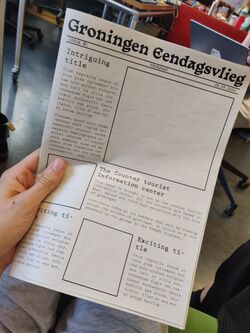
|
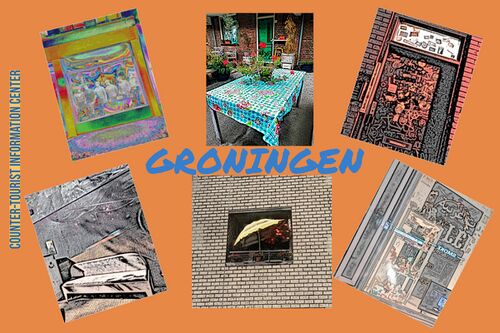
|
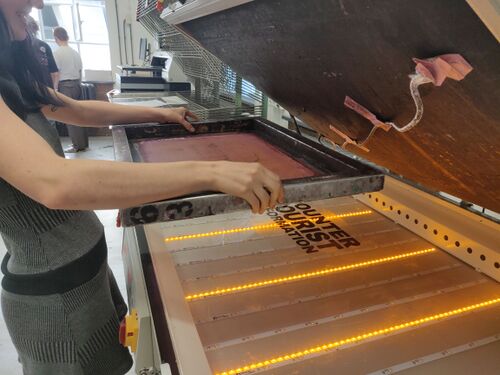
|

